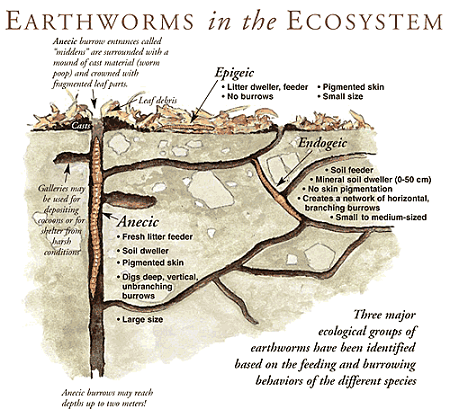We get a lot of requests for WORMS, but not every worm is the same! Before you order worms with us, please take a moment to learn a little about the WHATS WHYS and HOWS of worms. And listen, I know how it goes, your Grandfather, your Aunt, or a good family friend, knows a lot about worms, and since we all learn our gardening skills and secrets from those that came before us, we want to apply those tricks to our garden. But before you waste your time and money throwing red wigglers in your garden, take a moment and figure out the best plan for your season.
WORMS WORMS What kind??
RED WIGGLER Eisenia Fetida

Red Wigglers are a composting worm. They prefer a place where there is a high rate of decomposition. We sell these worms for people interested in starting their own composting or vermiculture bin.
“I just want to throw them in my garden to loosen up the soil. I’ve heard worms are good for the garden.”
YIKES! No! Red Wigglers are an epigeal worm. That means they live their life within the surface of the soil, usually under material that is usually nutrient rich and decomposing. This could be manure pile, or wet soggy logs, and of course compost heaps. They are usually no longer than a crayon when they aren’t stretched out, and they can be as thin as pencil graphite. Red Wigglers like to huddle together and eat rotting food and other organic material, but they do not spread out in the soil and till the way you may think. Red Wigglers are also a favorite dish of robins and blue jays, so that bag of worms you just tossed in your garden will probably get eaten in a couple weeks.

European Nightcrawler Eisenia Hortensis

European Nightcrawlers are not to be confused with the common earthworm, sometimes called the “Canadian Nightcrawler”(lumbricus terrestris). European Nightcrawlers are another red worm that lives in rotting material, and will help your composting efforts. They typically grow to be about twice the size of Red Wigglers, but not as large as the Canadian Nightcrawler that is in the lumbricus genus. An easy way to distinguish them from a red wiggler is by looking at the saddle(scientific term-clitellum), the reproductive band on their body. If you see this red worm, and it is already 2-3 inches long but does not have a developed saddle, this will tell you it is a younger nightcrawler, as opposed to the red wiggler which would have already developed a lump for its saddle band at this size. These worms can adapt a little better than Red Wigglers, digging a little deeper in the soil, but they are still considered top dwellers. Robins love them, and while they may break down some organic material, they are much better suited for your compost heap or bin.
“Okay I get it, but worms are supposed to till the garden! I know they are good for the soil and my grandfather used to always put them in his garden”
Canadian Nightcrawler Lumbricus Terrestris

Although all the worms we’re discussing are technically earthworms, when most people say “earthworm” they are thinking of a Canadian Earthworm or something similar, most often in the lumbricus genus, and not eisenia. This worm is in the anecic classification, and digs large burrows down into the ground, coming up to feed on litter and bring it down into their burrow. These worms are often used for bait, and are likely what people like to throw in their garden in attempts to keep the soil turned and tilled. But wait, don’t…
“YES, I want to put these in the garden…”
STOP! All of these earthworms are present in the environment. Before you go throwing worms in your soil, take note of a few important things.
- If you don’t have worms in your soil, there is a good chance you do not have enough organic material in your garden beds. Even the hardiest earthworm isn’t going to till clay, or bring nutrients into poor compacted soil. You need to add organic material to your garden. Do this by adding fresh compost, and mulching with things like chipped leaves from your spring clean up, or straw. The combination of all these things will draw up worms and other beneficial critters into your soil to help create a living biome in your soil which is what you want.
- Earthworms like the Canadian Nightcawler ARE considered invasive in certain ecological environments. While you might think they are going to help in your garden, they are damaging to forest ecosystems, and even heavy perennial environments. These worms will eat through organic material so quickly that 1. The nutrients from their castings(poop) will wash away quickly, leaving the site where they are needed, and in many cases this leads to eutrophication 2. The organic material that is typically used by trees and large perennials as a slow release fertilizer is eaten too quickly by these worms. Again, this pertains to forest ecosystems primarily, but we go back to the first point- there is no need to add them when you can introduce them naturally and avoid adding more to the environment that probably already exists.
- Farmers in this country often see worms as a good sign in their soil, but that’s because they are growing on acres and acres of land, and need all the help they can get sometimes. This is probably where that farmer’s wisdom gets handed down to you, the backyard gardener. If you are gardening in your yard, you should be able to manage your soil with compost applications on other no-till techniques and have a lot of success even without worms.









